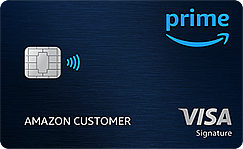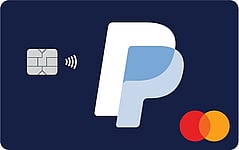13 Best Cash Back Credit Cards of July 2025
Updated on June 28, 2025+ 2 more+ 2 more
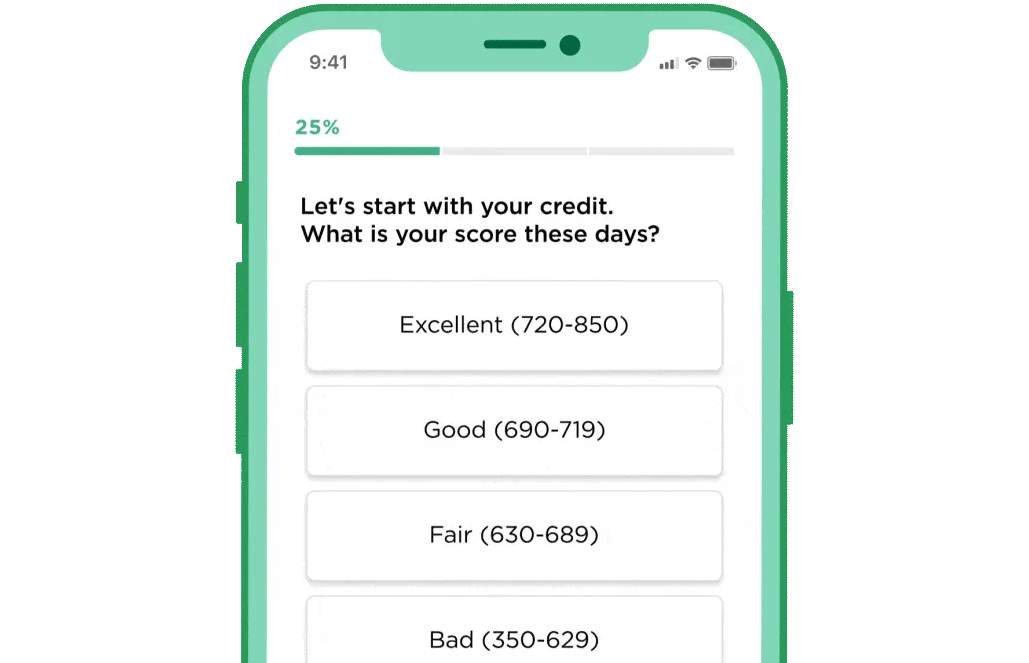
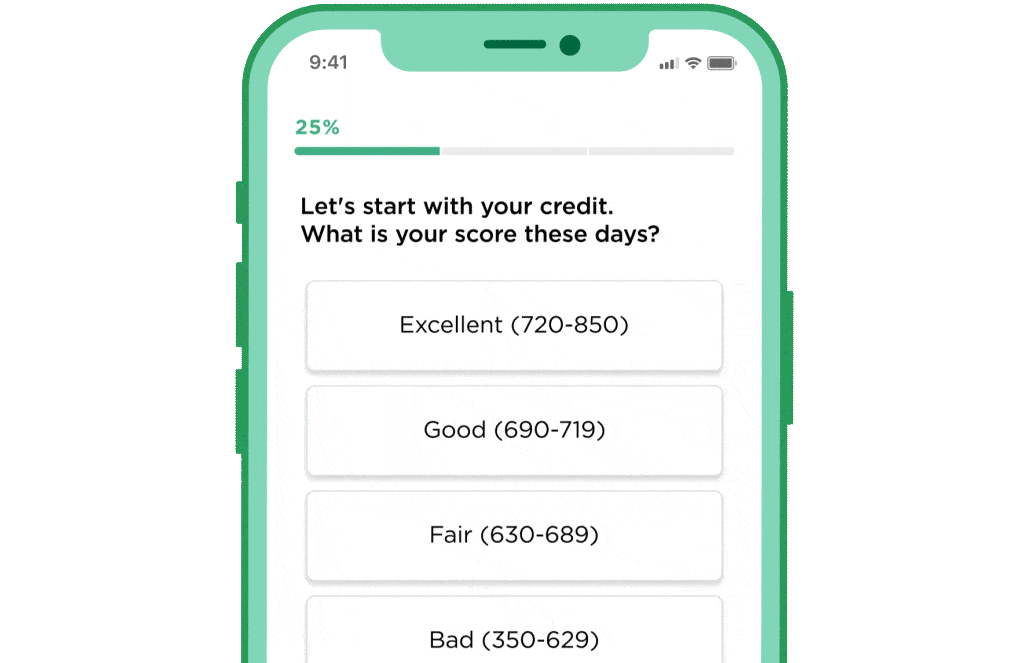
Answer a few quick questions, and we'll match you with your top credit cards. Or, keep scrolling to browse our best cash back cards.
TAKE THE QUIZ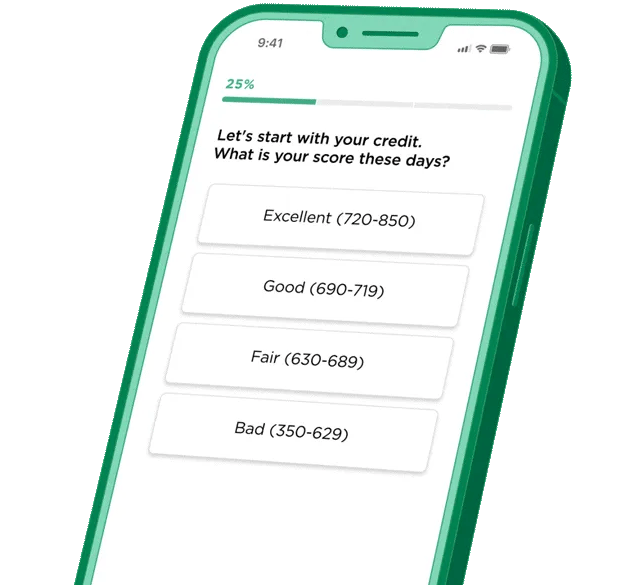
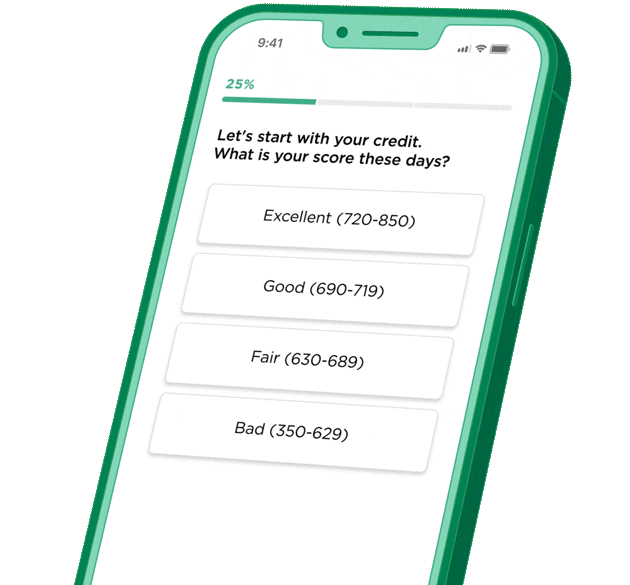
Why trust NerdWallet
Why trust NerdWallet
400+ credit cards reviewed by our team of experts (See our top picks)
80+ years of combined experience covering credit cards and personal finance
27,000+ hours spent researching and reviewing financial products in the last 12 months
Objective comprehensive ratings rubrics (Methodology)
NerdWallet's credit cards content, including ratings and recommendations, is overseen by a team of writers and editors who specialize in credit cards. Their work has appeared in The Associated Press, USA Today, The New York Times, MarketWatch, MSN, NBC's "Today," ABC's "Good Morning America" and many other national, regional and local media outlets. Each writer and editor follows NerdWallet's strict guidelines for editorial integrity.
App store reviews
4.8 out of 5
based on 118K ratings
Best Cash Back Credit Cards
The best cash back credit card is one you will use regularly. Some cards pay a single rate on every purchase, with no work required on your part. Others pay higher rewards in specific categories (up to 6% in some cases) and a lower rate elsewhere. Choose one card for everything, or carry several to maximize your cash back.
Show More
The best cash back credit card is one you will use regularly. Some cards pay a single rate on every purchase, with no work required on your part. Others pay higher rewards in specific categories (up to 6% in some cases) and a lower rate elsewhere. Choose one card for everything, or carry several to maximize your cash back.
The best cash back credit card is one you will use regularly. Some cards pay a single rate on every purchase, with no work required on your part. Others pay higher rewards in specific categories (up to 6% in some cases) and a lower rate elsewhere. Choose one card for everything, or carry several to maximize your cash back.
The best cash back credit card is one you will use regularly. Some cards pay a single rate on every purchase, with no work required on your part. Others pay higher rewards in specific categories (up to 6% in some cases) and a lower rate elsewhere. Choose one card for everything, or carry several to maximize your cash back.
Show SummaryHide Summary
NerdWallet's Best Cash Back Credit Cards of July 2025
Wells Fargo Active Cash® Card: Best for Flat-rate cash back
Chase Freedom Unlimited®: Best for All-around cash back
Discover it® Cash Back: Best for Quarterly categories + matching bonus
Capital One Savor Cash Rewards Credit Card: Best for Going out & staying in
Citi Double Cash® Card: Best for Simplicity + high rate
Blue Cash Preferred® Card from American Express: Best for Families & households
Blue Cash Everyday® Card from American Express: Best for Popular 3% categories
Capital One Quicksilver Cash Rewards Credit Card: Best for Simplicity + 0% APR offer
Bank of America® Customized Cash Rewards credit card: Best for Adjustable 3% categories
PayPal Cashback Mastercard®: Best for Regular PayPal users
Prime Visa: Best for Amazon Prime shoppers
Apple Card: Best for Apple Pay users
Synchrony Premier World Mastercard®: Best for High rate + hassle-free redemption
| Credit card | NerdWallet rating | Annual fee | Rewards rate | Intro offer | Learn more |
|---|---|---|---|---|---|
Apply Nowon Wells Fargo's website on Wells Fargo's website | Best for Flat-rate cash back | $0 | 2% | $200 | Apply Nowon Wells Fargo's website on Wells Fargo's website |
Apply Nowon Chase's website on Chase's website | Best for All-around cash back | $0 | 1.5%-5% | $200 | Apply Nowon Chase's website on Chase's website |
Apply Nowon American Express' website on American Express' website | Best for Families & households | $0 intro annual fee for the first year, then $95. | 1%-6% | $250 | Apply Nowon American Express' website on American Express' website |
Apply Nowon American Express' website on American Express' website | Best for Popular 3% categories | $0 | 1%-3% | $200 | Apply Nowon American Express' website on American Express' website |
Apply Nowon Capital One's website on Capital One's website | Best for Going out & staying in | $0 | 1%-8% | $200 | Apply Nowon Capital One's website on Capital One's website |
Apply Nowon Discover's website, on Discover's website, or call 800-347-0264 | Best for Quarterly categories + matching bonus | $0 | 1%-5% | Cashback Match™ | Apply Nowon Discover's website, on Discover's website, or call 800-347-0264 |
Apply Nowon Citibank's application on Citibank's application | Best for Simplicity + high rate | $0 | 2%-5% | $200 | Apply Nowon Citibank's application on Citibank's application |
Apply Nowon Bank of America's website on Bank of America's website | Best for Adjustable 3% categories | $0 | 1%-6% | $200 | Apply Nowon Bank of America's website on Bank of America's website |
Apply Nowon Synchrony Bank's website on Synchrony Bank's website | Best for High rate + hassle-free redemption | $0 | 2% | None | Apply Nowon Synchrony Bank's website on Synchrony Bank's website |
Apply Nowon Amazon.com's website on Amazon.com's website | Best for Amazon Prime shoppers | $0 | 1%-5% | $200 | Apply Nowon Amazon.com's website on Amazon.com's website |
Apply Nowon Capital One's website on Capital One's website | Best for Simplicity + 0% APR offer | $0 | 1.5%-5% | $200 | Apply Nowon Capital One's website on Capital One's website |
Apply Nowon Apple's website on Apple's website | Best for Apple Pay users | No Fees* | 1%-3% | N/A | Apply Nowon Apple's website on Apple's website |
| Best for Regular PayPal users | $0 | 1.5%-3% | N/A |

Find the right credit card for you.
Whether you want to pay less interest or earn more rewards, the right card's out there. Just answer a few questions and we'll narrow the search for you.
Whether you want to pay less interest or earn more rewards, the right card's out there. Just answer a few questions and we'll narrow the search for you.
Our pick for: All-around cash back
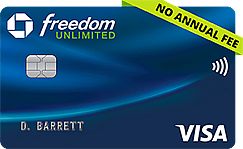
Rewards breakdown
Card details
- Intro Offer: Earn a $200 Bonus after you spend $500 on purchases in your first 3 months from account opening
- Enjoy 5% cash back on travel purchased through Chase Travel℠, our premier rewards program that lets you redeem rewards for cash back, travel, gift cards and more; 3% cash back on drugstore purchases and dining at restaurants, including takeout and eligible delivery service, and 1.5% on all other purchases.
- No minimum to redeem for cash back. You can choose to receive a statement credit or direct deposit into most U.S. checking and savings accounts. Cash Back rewards do not expire as long as your account is open!
- Enjoy 0% Intro APR for 15 months from account opening on purchases and balance transfers, then a variable APR of 18.99% - 28.49%.
- No annual fee – You won't have to pay an annual fee for all the great features that come with your Freedom Unlimited® card
- Keep tabs on your credit health, Chase Credit Journey helps you monitor your credit with free access to your latest score, alerts, and more.
- Member FDIC
- View Rates & Fees
NerdWallet's take
The Chase Freedom Unlimited® is the rare cash back card that doesn't just have strong bonus categories — in this case, restaurants, drugstores and travel booked through Chase — but also pays more than 1% on purchases outside those categories.
Rewards: 5% cash back on travel booked through Chase; 3% at restaurants and drugstores; and 1.5% on other purchases.
No spending caps on bonus categories.
Solid bonus offer: Intro Offer: Earn a $200 Bonus after you spend $500 on purchases in your first 3 months from account opening.
Good 0% intro APR period on purchases and balance transfers.
$0 annual fee.
Rewards can be transferred to one of Chase’s Sapphire cards for greater redemption flexibility and potentially higher value.
While you can earn big rewards on travel bookings with this card, it also charges a 3% foreign transaction fee, so it's not a good companion abroad.
Our pick for: Flat-rate cash back

Rewards breakdown
Card details
- Apply Now to take advantage of this offer and learn more about product features, terms and conditions.
- Earn a $200 cash rewards bonus after spending $500 in purchases in the first 3 months.
- Earn unlimited 2% cash rewards on purchases.
- 0% intro APR for 12 months from account opening on purchases and qualifying balance transfers. 19.24%, 24.24%, or 29.24% variable APR thereafter; balance transfers made within 120 days qualify for the intro rate and fee of 3% then a BT fee of up to 5%, min: $5.
- $0 annual fee.
- No categories to track or remember and cash rewards don’t expire as long as your account remains open.
- Find tickets to top sports and entertainment events, book travel, make dinner reservations and more with your complimentary 24/7 Visa Signature® Concierge.
- Up to $600 of cell phone protection against damage or theft. Subject to a $25 deductible.
- View Rates & Fees
NerdWallet's take
If you’re looking for one cash back card to use on everything — or one card to use on “everything else” in a multicard setup — it’s hard to go wrong with the Wells Fargo Active Cash® Card.
Rewards: 2% cash back on all purchases. That’s as good as it gets for unlimited flat-rate cash back.
No categories or spending limits to keep track of.
The bonus offer is competitive: Earn a $200 cash rewards bonus after spending $500 in purchases in the first 3 months.
Decent 0% intro APR period.
$0 annual fee.
Cell phone protection.
A flat-rate card like this is perfect for those who like to keep things simple, but you can find higher cash-back rates in specific spending categories if you're OK with managing multiple cards.
Many competing cards offer a longer intro APR period, if you’ve got a large purchase you need to finance.
There's a foreign transaction fee.
Our pick for: Families & households

Rewards breakdown
Card details
- Earn a $250 statement credit after you spend $3,000 in eligible purchases on your new Card within the first 6 months.
- $0 intro annual fee for the first year, then $95.
- Buy Now, Pay Later: Enjoy $0 intro plan fees when you use Plan It® to split up large purchases into monthly installments with a fixed fee. Pay $0 intro plan fees on plans created during the first 12 months from the date of account opening. Plans created after that will have a monthly plan fee up to 1.33% of each eligible purchase amount moved into a plan based on the plan duration, the APR that would otherwise apply to the purchase, and other factors.
- Low Intro APR: 0% intro APR on purchases and balance transfers for 12 months from the date of account opening. After that, your APR will be a variable APR of 20.24% - 29.24%.
- 6% Cash Back at U.S. supermarkets on up to $6,000 per year in purchases (then 1%).
- 6% Cash Back on select U.S. streaming subscriptions.
- 3% Cash Back at U.S. gas stations and on transit (including taxis/rideshare, parking, tolls, trains, buses and more).
- 1% Cash Back on other purchases.
- Cash Back is received in the form of Reward Dollars that can be redeemed as a statement credit or at Amazon.com checkout.
- $84 Disney Bundle Credit: With your enrolled Blue Cash Preferred® Card, spend $9.99 or more each month on an auto-renewing Disney Bundle subscription, to receive a monthly statement credit of $7. Valid only at Disney Plus.com, Hulu.com or Plus.espn.com in the U.S.
- Apply with confidence. Know if you're approved for a Card with no impact to your credit score. If you're approved and you choose to accept this Card, your credit score may be impacted.
- Terms Apply.
- View Rates & Fees
NerdWallet's take
The Blue Cash Preferred® Card from American Express earns stellar rewards — up to 6% in everyday categories — that can easily make its annual fee worth paying for households that spend a lot on groceries, gas, transit and streaming.
Top rewards: 6% cash back at U.S. supermarkets, on up to $6,000 a year in spending (then 1%); 6% on select U.S. streaming subscriptions.
Other rewards: 3% at U.S. gas stations; 3% on transit, including such things as taxis, rideshares, parking, tolls, trains and buses; 1% on other purchases.
The welcome offer can take some of the sting out of the fee: Earn a $250 statement credit after you spend $3,000 in purchases on your new Card within the first 6 months. Terms Apply.
You get a decent intro APR offer.
Up to $84 a year in Disney Bundle credit ($7 a month); enrollment required.
Terms apply.
The annual fee will be a sticking point for some: $0 intro annual fee for the first year, then $95.
However: The rewards will offset the fee if you spend just $31 a week at the supermarket. And some cardholders may be able to cover the fee just with the streaming benefits, especially if you already subscribe to the Disney Bundle.
Several competing cash back cards offer a longer intro APR period.
Our pick for: Going out & staying in
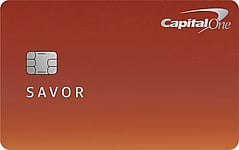
Rewards breakdown
Card details
- Earn a one-time $200 cash bonus once you spend $500 on purchases within the first 3 months from account opening
- Earn unlimited 3% cash back at grocery stores (excluding superstores like Walmart® and Target®), on dining, entertainment and popular streaming services, plus 1% on all other purchases
- Earn 8% cash back on Capital One Entertainment purchases
- Earn unlimited 5% cash back on hotels and rental cars booked through Capital One Travel, where you'll get Capital One's best prices on thousands of trip options. Terms apply
- No rotating categories or sign-ups needed to earn cash rewards; plus cash back won't expire for the life of the account and there's no limit to how much you can earn
- 0% intro APR on purchases and balance transfers for 15 months; 19.24% - 29.24% variable APR after that; balance transfer fee applies
- No foreign transaction fee
- No annual fee
- View Rates & Fees
NerdWallet's take
The Capital One Savor Cash Rewards Credit Card offers an irresistible (and hard-to-find) combination: high cash-back rates at restaurants AND at grocery stores, as well as on a broad range of entertainment options.
Rewards: 3% cash back on dining, at grocery stores, on entertainment, and on eligible streaming services; 8% on Capital One Entertainment purchases; other purchases earn 1%.
No spending caps on bonus category rewards.
Good bonus offer: Earn a one-time $200 cash bonus once you spend $500 on purchases within the first 3 months from account opening.
Good 0% intro APR period.
No foreign transaction fees.
$0 annual fee.
If your spending is more concentrated in one food category over the other — dining out or cooking at home — you might do better with a card that specializes in that area.
Our pick for: Simplicity + high rate

Rewards breakdown
Card details
- Earn $200 cash back after you spend $1,500 on purchases in the first 6 months of account opening. This bonus offer will be fulfilled as 20,000 ThankYou® Points, which can be redeemed for $200 cash back.
- Earn 2% on every purchase with unlimited 1% cash back when you buy, plus an additional 1% as you pay for those purchases. To earn cash back, pay at least the minimum due on time. Plus, earn 5% total cash back on hotel, car rentals and attractions booked with Citi Travel.
- Balance Transfer Only Offer: 0% intro APR on Balance Transfers for 18 months. After that, the variable APR will be 18.24% - 28.24%, based on your creditworthiness.
- Balance Transfers do not earn cash back. Intro APR does not apply to purchases.
- If you transfer a balance, interest will be charged on your purchases unless you pay your entire balance (including balance transfers) by the due date each month.
- There is an intro balance transfer fee of 3% of each transfer (minimum $5) completed within the first 4 months of account opening. After that, your fee will be 5% of each transfer (minimum $5).
- View Rates & Fees
NerdWallet's take
The Citi Double Cash® Card was one of the first cards to offer unlimited 2% cash back on all purchases (albeit with a twist), and it remains a favorite.
Rewards: 2% cash back on all purchases. The 2% comes in two parts: 1% when you make a purchase and another 1% when you pay it off. A little bit of complexity there, but nothing major.
No bonus categories to track or spending limits to deal with.
For a long time, this card didn’t have a bonus offer for new cardholders. Now it does: Earn $200 cash back after you spend $1,500 on purchases in the first 6 months of account opening. This bonus offer will be fulfilled as 20,000 ThankYou® Points, which can be redeemed for $200 cash back.
$0 annual fee.
This card’s appeal lies in its simplicity: 2% on everything. But you can find higher rewards rates in specific spending categories on other cards.
Unlike many cards in its class, this card has no 0% intro APR period for purchases. It does have a good balance transfer offer, though.
The card charges foreign transaction fees.
Our pick for: Popular 3% categories
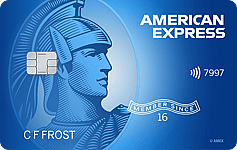
Rewards breakdown
Card details
- Earn a $200 statement credit after you spend $2,000 in purchases on your new Card within the first 6 months.
- No Annual Fee.
- Enjoy 0% intro APR on purchases and balance transfers for 15 months from the date of account opening. After that, 20.24% to 29.24% variable APR.
- 3% Cash Back at U.S. supermarkets on up to $6,000 per year in purchases, then 1%.
- 3% Cash Back on U.S. online retail purchases, on up to $6,000 per year, then 1%.
- 3% Cash Back at U.S. gas stations, on up to $6,000 per year, then 1%.
- Cash back is received in the form of Reward Dollars that can be redeemed as a statement credit or at Amazon.com checkout.
- Thinking about getting the Disney Bundle which can include Disney+, Hulu, and ESPN+? Your decision made easy with $7/month back in the form of a statement credit after you spend $9.99 or more each month on an eligible subscription (subject to auto renewal) with your Blue Cash Everyday® Card. Enrollment required.
- Apply with confidence. Know if you're approved for a Card with no impact to your credit score. If you're approved and you choose to accept this Card, your credit score may be impacted.
- Terms Apply.
- View Rates & Fees
NerdWallet's take
Offering 3% cash back in popular categories, the Blue Cash Everyday® Card from American Express is a strong contender for families that spend a lot on groceries, gas and online shopping but don’t want to pay an annual fee.
Rewards: 3% cash back on up to $6,000 spent per year in each of three categories: U.S. supermarkets, U.S. gas stations and U.S. online retail purchases. Other spending earns 1% cash back.
Welcome offer: Earn a $200 statement credit after you spend $2,000 in purchases on your new Card within the first 6 months. Terms Apply.
Great 0% intro APR period.
Up to $84 a year in Disney Bundle credit ($7 a month); enrollment required.
$0 annual fee.
Terms apply.
Bonus rewards are capped in each category.
Many households that spend a lot on groceries and streaming will be better off with the Blue Cash Preferred® Card from American Express, even after accounting for its annual fee, because of that card's higher rewards rates.
Our pick for: Quarterly categories + matching bonus
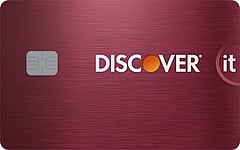
Rewards breakdown
Card details
- INTRO OFFER: Unlimited Cashback Match for all new cardmembers–only from Discover. Discover will automatically match all the cash back you’ve earned at the end of your first year! There’s no minimum spending or maximum rewards. You could turn $150 cash back into $300.
- Earn 5% cash back on everyday purchases at different places you shop each quarter like grocery stores, restaurants, gas stations, and more, up to the quarterly maximum when you activate. Plus, earn unlimited 1% cash back on all other purchases.
- Redeem your rewards for cash at any time.
- Apply and you could get a decision in as little as 60 seconds. No annual fee.
- Start shopping and earning rewards in minutes with your digital card, before your physical card arrives in the mail, if eligible.
- Get a 0% intro APR for 15 months on purchases. Then 18.24% to 27.24% Standard Variable Purchase APR applies, based on credit worthiness.
- Terms and conditions apply.
- View Rates & Fees
NerdWallet's take
Offering rich rewards in common spending categories that change every few months, as well as a bonus offer that gets more valuable the more you use the card in the first year, the Discover it® Cash Back does well as an everyday card or as one element in a multicard setup.
Rewards: 5% cash back in quarterly categories that you activate (on up to $1,500 per quarter in spending); 1% on other purchases (including spending above the cap in bonus categories).
Bonus categories regularly include big line items in many household budgets: grocery stores, restaurants, gas stations and more.
Discover’s signature bonus offer matches all the cash back you earn in your first year, with no limit.
Solid introductory APR offer on purchases and balance transfers.
$0 annual fee.
Activating the bonus categories each quarter can be a hassle. If you forget, you don't get 5%.
Bonus rewards are capped, and the bonus categories might not be a good fit for everyone.
You have to wait a year to collect your bonus.
Our pick for: High rate + hassle-free redemption

Rewards breakdown
Card details
- 2% cash back* on every purchase--no categories, tiers, or limits--no kidding.
- No annual fee^
- Zero Liability Protection
- Secure online and mobile app account access
- Get more out of every day purchases -- earn 2% cash back with the Synchrony Premier World Mastercard. No complicated math or rewards categories to remember.
- Plus, you'll also gain access to additional key benefits like identity theft protection, money-saving discounts, and concierge travel planning support.
- *CASH BACK REWARDS: Subject to credit approval. Valid on net purchases (less credits, returns and adjustments) of goods and services made with a Synchrony Premier World Mastercard. Cash back earned will be applied as a statement credit within 2 billing periods after an eligible purchase is made. Cash advances, fees and interest charges do not qualify to earn cash back. Account must be open and in good standing at the time the purchase is made and the statement credit is applied. See Rewards Program Terms for details.
- ^NO ANNUAL FEE: New Accounts as of January 1, 2025: Variable Purchase APR 18.24%, 27.24%, or 33.99%. Variable Balance Transfer APR 18.24%, 27.24% or 33.99% and 4% Fee ($10 min). Variable Cash APR 21.24%, 30.24% or 36.99% and 5% Fee ($10 min). Variable Penalty APR 28.24%, 37.24% or 39.99%. Minimum Interest Charge is $2. Foreign Transaction Fee is 3%.
NerdWallet's take
If you're looking for a 2% cash back credit card without frills, hassles or complications, the Synchrony Premier World Mastercard® might be for you. Easy earning, automatic redemption.
This is a good card for someone who wants to earn a lot of cash back without a lot of work. There are no bonus categories to keep track of, just straight 2% cash back on all purchases.
Your cash back redeems automatically as a statement credit (within two billing cycles).
$0 annual fee.
This card doesn't have a sign-up bonus or a 0% intro APR period.
Because the rewards redeem automatically, you can't save them up for something special, as some folks like to do.
This card ordinarily pays 3% cash back in a category you choose (terms apply). In the first year, however, that top rate DOUBLES to 6% cash back. Options for your 3%/6% category include gas, dining, travel, online shopping and more. See details below.
Our pick for: Adjustable 3% categories
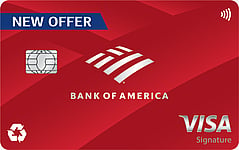
Rewards breakdown
Card details
- New offer! Earn 6% cash back for the first year in the category of your choice: gas and EV charging stations; online shopping, including cable, internet, phone plans and streaming; dining; travel; drug stores and pharmacies; or home improvement and furnishings. You’ll automatically earn 2% cash back at grocery stores and wholesale clubs, and unlimited 1% cash back on all other purchases. After the first year from account opening, you’ll earn 3% cash back on purchases in your choice category.
- Earn 6% and 2% cash back on the first $2,500 in combined purchases each quarter in the choice category, and at grocery stores and wholesale clubs, then earn unlimited 1% thereafter. After the 3% first-year bonus offer ends, you will earn 3% and 2% cash back on these purchases up to the quarterly maximum.
- $200 online cash rewards bonus after you make at least $1,000 in purchases in the first 90 days of account opening.
- With the Bank of America Preferred Rewards® program, members can earn 25%-75% more cash back on every purchase. That means the 3% choice category could go up to 3.75%-5.25%. The Preferred Rewards bonus is not applied to the 3% first-year bonus.
- No annual fee and cash rewards don’t expire as long as your account remains open.
- 0% Intro APR for 15 billing cycles for purchases, and for any balance transfers made in the first 60 days. After the Intro APR offer ends, a Variable APR that’s currently 18.24% - 28.24% will apply. A 3% Intro balance transfer fee will apply for the first 60 days your account is open. After the Intro balance transfer fee offer ends, the fee for future balance transfers is 4%. Balance transfers may not be used to pay any account provided by Bank of America.
- Contactless Cards - The security of a chip card, with the convenience of a tap.
- This online only offer may not be available if you leave this page or if you visit a Bank of America financial center. You can take advantage of this offer when you apply now
NerdWallet's take
Other credit cards offer 3% cash back in specific categories, but the Bank of America® Customized Cash Rewards credit card let YOU decide what those categories are and when.
Rewards: 3% cash back in a category you choose (6% in the first year) and 2% at grocery stores and wholesale clubs, on up to $2,500 per quarter in combined spending in those categories. All other purchases earn 1% cash back.
The 3% options are gas, dining, travel, online shopping, drugstores or home improvement and furnishings. You can change your choice once a month, allowing you to plan purchases strategically.
Good bonus offer: $200 online cash rewards bonus after you make at least $1,000 in purchases in the first 90 days of account opening.
Lengthy 0% intro APR period.
$0 annual fee.
The rewards structure is somewhat complicated.
Because the amount of spending eligible for the 3% and 2% rewards is capped, you might earn more rewards with a simple flat-rate card that pays an unlimited 1.5% or 2% on everything.
This card charges a foreign transaction fee.
Our pick for: Amazon Prime shoppers
Rewards breakdown
Card details
- Special Offer: Get a $200 Amazon Gift Card instantly upon approval exclusively for Prime members
- Earn unlimited 5% back at Amazon.com, Amazon Fresh, Whole Foods Market and on Chase Travel purchases with an eligible Prime membership
- Prime Card Bonus: Earn 10% back or more on a rotating selection of items and categories on Amazon.com with an eligible Prime membership
- Earn unlimited 2% back at gas stations, restaurants, and on local transit and commuting (including rideshare)
- Earn unlimited 1% back on all other purchases
- No annual credit card fee
- No more waiting. Redeem daily rewards at Amazon.com as soon as the next day
- Member FDIC
- View Rates & Fees
NerdWallet's take
Amazon's Prime Visa isn't your typical store card, but Amazon isn't your typical store. If you're a Prime member who spends a lot of money in the Amazon ecosystem, the unlimited 5% cash back on this card makes it nearly a must-have.
Rewards: 5% back at Amazon and Whole Foods Market; 5% on travel booked through Chase; 2% at restaurants and gas stations and on rideshare, commuting and local transit; 1% on other purchases.
Rewards are earned as points that you can redeem for Amazon purchases or for statement credit, so they're as good as cash.
No spending caps on bonus rewards categories.
New cardholders get this offer: Get a $200 Amazon Gift Card instantly upon approval exclusively for Prime members.
No foreign transaction fees.
There's no annual fee, but you must be a Prime member, which costs $139 a year. (Then again, if you're already a Prime member, the card generates significant savings at no additional cost.)
Unlike with most top cash back cards, there’s no intro APR offer.
Our pick for: Simplicity + 0% APR offer
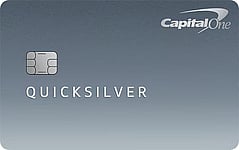
Rewards breakdown
Card details
- Earn a one-time $200 cash bonus after you spend $500 on purchases within 3 months from account opening
- Earn unlimited 1.5% cash back on every purchase, every day
- $0 annual fee and no foreign transaction fees
- Earn unlimited 5% cash back on hotels and rental cars booked through Capital One Travel, where you'll get Capital One's best prices on thousands of trip options. Terms apply
- No rotating categories or sign-ups needed to earn cash rewards; plus, cash back won't expire for the life of the account and there's no limit to how much you can earn
- 0% intro APR on purchases and balance transfers for 15 months; 19.24% - 29.24% variable APR after that; balance transfer fee applies
- View Rates & Fees
NerdWallet's take
The original 1.5% cash-back credit card is still getting it done, even after being challenged by a wave of competitors. Few cards offer as compelling a combination of cash-back rate, sign-up bonus, intro 0% APR offer and redemption flexibility as the Capital One Quicksilver Cash Rewards Credit Card.
Rewards: unlimited 1.5% cash back on every purchase.
Cash back is credited to your rewards balance quickly and is redeemable in any amount, with no minimum.
Good bonus offer: Earn a one-time $200 cash bonus after you spend $500 on purchases within 3 months from account opening.
Strong into APR period.
$0 annual fee.
The 1.5% flat cash back rate was an industry leader when this card launched, but nowadays you can find 2% on multiple cards. Some strings may be attached, though.
Our pick for: Apple Pay users
Rewards breakdown
Card details
- *Variable APRs for Apple Card range from 18.24% to 28.49% based on creditworthiness. Rates as of January 1, 2025. Existing customers can view their variable APR in the Wallet app or card.apple.com.
- Approval Odds are statements and determinations by NerdWallet and not those of Goldman Sachs Bank USA.
- See if you’re approved for Apple Card with no impact to your credit score.¹
- Created by Apple and built for iPhone. Designed to be private and secure.
- No fees.² No annual fees, foreign transaction fees, late fees, or any other fees.³
- Unlimited Daily Cash back on every purchase, every day. It’s real cash⁴ that never expires or loses value.
- Now, you can automatically grow your Daily Cash when you open a high-yield Savings account.⁵ Savings provided by Goldman Sachs Bank USA. Member FDIC.
- Apple Card Family allows you to share the benefits with anyone you call family.⁶
- Apple-designed, laser-etched titanium card that is accepted all over the world with the Mastercard payment network.
- 3% back on anything you buy from Apple, and at select merchants like Uber, Nike, Walgreens and more when you use Apple Card with Apple Pay.⁷
- 2% back when you use Apple Card with Apple Pay. Apple Pay is accepted at over 85% of retail locations in the U.S.
- Apply in minutes and use it right away.⁸
- ¹²³⁴⁵⁶⁷⁸Select “View Rates and Fees” to see offer, benefit terms, and important disclosures.
- View Rates & Fees
NerdWallet's take
If the bulk of your purchases are already going through Apple Pay, it makes sense to put them on the Apple Card.
Rewards: 2% cash back on Apple Pay purchases; 3% when using Apple Pay at certain merchants. (As of February 2025, the list included Apple, Nike, Walgreeens, Exxon and Ace Hardware. See our review for the full list.) Other spending earns 1%.
Your rewards, which the issuer refers to as Daily Cash, are credited to your account daily and can be redeemed right away; by contrast, some cards make you wait as long as two statement cycles.
No annual fee, late fees or foreign transaction fees.
There’s no sign-up bonus and no 0% APR period for general purchases.
The value of this card depends largely on your ability to use Apple Pay. If that isn't an option with a specific merchant, you can still use a physical Apple Card or a virtual card number online, but you earn only 1% on such purchases.
The list of 3% merchants is fairly short, and additions have been rare.
Our pick for: Regular PayPal users
Rewards breakdown
Card details
- With the PayPal Cashback Mastercard, you’ll earn unlimited 3% cash back when you checkout with PayPal and 1.5% on all other purchases everywhere else Mastercard is accepted—unlimited cash back, no rotating categories, and no annual fee. Plus, apply with no impact to your credit score if you’re declined.
- Combine merchant cash back offers with cash back you earn with your card. Just save the offers in the app and we'll automatically apply them at checkout.
- With the Mastercard ID Theft Protection™ benefit, you will be alerted to possible identity theft.
NerdWallet's take
The 1.5% base rewards rate on the PayPal Cashback Mastercard® isn't anything special within the cash back category. But that rate doubles on purchases through PayPal, and that makes it a winner for heavy PayPal users.
Rewards: 3% cash back on purchases through PayPal and 1.5% on other spending. With most major online retailers now accepting PayPal, you can earn 3% on a considerable amount of your discretionary spending.
$0 annual fee.
Unlike competing options in its class, this card offers neither a sign-up bonus nor a 0% intro APR period.
You must have a PayPal account to apply.
How NerdWallet rates cash back credit cards
NerdWallet assigns star ratings to cash back credit cards based on how much value they provide to a typical consumer. Our scale goes from 1.0 at the bottom to 5.0 at the top and is incremented in tenths of a star — such as 2.5, 3.7 or 5.0.
How ratings are set
What the stars mean
Rewards structure
Bonus categories
Fees, perks and more
Ask our credit card experts
 Kenley Young
Kenley Young
WHAT'S YOUR CASH BACK CREDIT CARD STRATEGY?
I carry about a half-dozen cash-back credit cards, and each has a specific use case. Groceries are a major line item for our family of four, so the Citi Custom Cash® Card is our designated card for supermarket sweeps. Dining out is a close second, and those expenses typically go on the Chase Freedom Unlimited®. If either grocery stores or restaurants happens to be in the quarterly bonus categories for Chase or Discover, then I reach for my Chase Freedom Flex® or my Discover it® Cash Back. For "all else," it's usually my Citi Double Cash® Card.

Kenley Young
Managing Editor
 Funto Omojola
Funto Omojola
WHAT'S YOUR CASH BACK CREDIT CARD STRATEGY?
The best cash back card for me is one that earns a high flat rate for all my spending, so I don't have to juggle many cards or keep track of multiple bonus rewards categories. I use a credit card for nearly every purchase, so it gives me the peace of mind knowing I can pull out one card and earn rewards regardless of what I use it for.

Funto Omojola
Lead Writer & Content Strategist
 Claire Tsosie
Claire Tsosie
WHAT'S YOUR CASH BACK CREDIT CARD STRATEGY?
I use the Citi Double Cash® Card, which I got in 2015, for almost all of my purchases. When it came out, I remember wondering if it would stick around for long because the rewards rate seemed too high (and at the time, higher than all the other offers). It changed some details but it's basically the same as when I got it. It's helped me earned thousands in rewards over the years without any fancy strategies. At times, I've juggled dozens of credit cards and been a super-optimizer, but this is a card that I come back to when I don't want to deal with all that.

Claire Tsosie
Managing Editor
Ask Reddit: What's the best cash back card?
Reddit users who frequent the site's personal finance forums, particularly r/CreditCards, know that requests for credit card recommendations come up on a daily if not hourly basis. These requests are so common that r/CreditCards asks users to fill out a detailed template with enough information to help other redditors make an appropriate recommendation.
The credit cards subreddit has scores of threads asking some variation of the question "What's the best cash back credit card?" The answers tend to be all over the map — as they should be, since the "best" cash back credit card for you (or anyone) is very much dependent on your individual circumstances. In one of these discussions, a user summed up the point pretty much the same way NerdWallet does:
— Reddit user Eli-Had-A-Book-"Depends on where you spend your cash & how much it is. One card doesn't fit everyone's needs or wants."
For example, in a post from spring 2024 (the source of the comment shown above), a redditor asked for the "best cash back card in 2024," with their only parameters being no "hoops" to jump through and no rotating categories. The thread attracted 208 comments before being archived, and those comments touched on more than 30 distinct cards. Some were cited more than others, but the sheer variety of the suggestions reflects the many ways in which people use cash back cards. For example:
For those who value simplicity, multiple users suggested getting a good flat-rate card like the Citi Double Cash® Card (the card that came up most frequently in that discussion), the Wells Fargo Active Cash® Card, the Fidelity® Rewards Visa Signature® Card or the PayPal Cashback Mastercard® and then putting all spending on that card.
Other redditors recommended cards that offer supercharged rewards when used in specific ways. For example, the Kroger Rewards World Elite Mastercard, from the Kroger supermarket conglomerate, pays 5% cash back on purchases made with mobile wallets. With so many merchants now able to take mobile wallet payments, some users view this card as giving them 5% on everything. The amount of spending eligible for 5% has an annual cap, though, so some users said they have more than one account, giving them a higher cap.
Users who are members of the Bank of America® Preferred Rewards program rave about the high cash back rates they're able to earn on that issuer's cards thanks to rewards bonuses of up to 75%.
A separate discussion in fall 2024 started with a question, "What is the BEST cash back card for EVERYTHING?" After 117 comments, users had tossed around more than 30 options there, too. And looking back at similar threads over the years, the pattern is the same.
Worth noting: The r/CreditCards subreddit is popular with card hackers who might carry a dozen or more cards and excel at squeezing maximum rewards out of them all, so it's common to see suggestions that point to fairly obscure cash back cards or even travel rewards credit cards whose points can be turned into cash with strategic redemption. A post asking for recommendations for a single cash back card that someone can use for every purchase will commonly draw responses encouraging the user to expand their horizons and combine two or more options to enhance their earning.
So what's Reddit's favorite cash back credit card? It doesn't have one. While r/CreditCards maintains comprehensive lists of cards that earn good cash back in common categories, it isn't going to pick a "winner." Reddit is a huge community of individuals. The r/CreditCards subreddit had 1.4 million members as of September 2024, while r/personalfinance had 20 million. You're never going to get a single definitive answer, because every response is coming from a different individual who has found what works for them. But because so many people are participating, Reddit users offer up a lot of different scenarios that might match your situation, which means the recommendations that accompany those scenarios may have value to you.
Here are threads that Reddit's algorithm has highlighted for discussions about the "best" cash back cards in popular categories:
Groceries (or see more discussions).
Gas (or see more discussions).
Restaurants (or see more discussions).
Travel (or see more discussions).
"Everything" (or see more discussions).
Most popular cash back credit cards
NerdWallet’s credit card experts have reviewed hundreds of credit cards. These are the most visited review pages for cash back credit cards.
Methodology
NerdWallet's Credit Cards team selects the best cash-back credit cards based on overall consumer value, as evidenced by star ratings, as well as their suitability for specific kinds of consumers. Factors in our evaluation include each card's cash-back earning rates, rewards structure (such as flat-rate or tiered categories), annual fee, redemption options (including minimum redemption amounts), promotional APR period for purchases, bonus offers for new cardholders, and noteworthy features such as loyalty bonuses or the ability to choose one's own rewards categories. Learn how NerdWallet rates credit cards.
Frequently asked questions
How do cash-back credit cards work?
Every time you use a cash-back credit card, the card issuer "pays you back" a certain percentage of the purchase amount. For example, if your card earns 2% cash back on all purchases, and you buy something for $80, then you would earn $1.60 in cash back. Or say your card earns 5% at the gas station; in that case, a $42 fill-up would earn $2.10.
With most cash-back cards, you can see your accumulated earnings on your monthly statement or through your online account portal, and you can decide when and how to redeem your cash back. Some cards automatically apply your cash back to your account as a credit.
Do cash-back cards actually give you cash?
"Cash back" doesn't mean the card issuer sends you an envelope full of dollar bills. But the rewards do ultimately leave you with more cash in your pocket. The simplest way to redeem cash back is to take it as a credit that reduces your account balance: Redeem $50 worth of cash back, and a $325 balance becomes $275. Many cards also allow you to redeem cash back as a direct deposit into a bank account, and some will even mail you a paper check if you request it.
Every card issuer has its own rules for how you can redeem cash back. Some have a minimum redemption requirement — you might not be able to cash in your rewards until you have accumulated at least $20 or $25. Others let you redeem any amount at any time.
What kinds of cash-back credit cards are there?
There are two basic kinds of cash-back credit cards:
Flat-rate cards pay the same cash-back rate no matter what you buy. Flat-rate cards typically pay 1.5% to 2% on everything.
Bonus category cards pay higher rates (as much as 5% or 6%) at specific types of merchants, such as grocery stores or restaurants, and a lower rate (usually 1%) everywhere else.
Bonus categories themselves come in different flavors. On a lot of cards, the bonus categories never change. For example, you might always earn 3% at restaurants or 5% at gas stations. Some cards have rotating categories that change every three months, and you need to "activate" the categories online to qualify for the higher rate. And some cards have customizable bonus categories — you can choose which purchases earn higher rewards, or the card automatically adjusts to give you higher rewards in the category where you spend the most money.
It's common (though by no means universal) for bonus category cards to cap the amount of spending that qualifies for their highest rates; once you hit the cap, any spending in those categories reverts to the card's lower "everywhere else" rate. In general, cash back cards don't limit the total amount of cash back you can earn, although there are some exceptions.
What's the highest-paying cash-back card?
Everyone's spending patterns are different, so the card that earns you the most cash back depends on your individual situation. If you spend far more money eating out than at home, for example, a card that pays 3% at restaurants would likely be a better fit than one that pays 6% at supermarkets.
Is cash back from a credit card taxable?
Legally speaking, credit card rewards are treated as discounts on purchases rather than as income. That means you don't owe any taxes on your cash back.
Does cash back expire?
Cash back rewards typically do not expire as long as your account remains open and active. (Exceptions may apply, so check your card agreement.) Some cards may automatically apply your cash back as a credit against purchases on your next statement; others let you save it up and use it when you want.
Should I save up cash back rewards?
From a purely financial standpoint, the best way to use cash back is to redeem it as soon as it is received. Cash back doesn't earn interest, so inflation erodes its value as it sits unredeemed. If you want to put the money into savings, redeem it as a direct deposit into a bank account rather than let it build up. If that's not an option, redeem for statement credit and then put an equal amount into savings.
That said, it's not a catastrophic error to let your rewards balance build toward a goal — a big purchase, a trip, whatever. Just have a goal in mind, and don't let it sit for years on end.
Why do credit cards give cash back?
Credit card issuers give you cash back because doing so encourages you to use their cards. Credit card issuers make money from three main sources:
Fees paid by cardholders, including annual fees, late fees, balance transfer fees and so on.
Interest.
Transaction fees paid by merchants who accept credit cards, often referred to as "interchange."
Most cash back cards don't charge annual fees. So in most cases, the only way the card issuer is going to make money off a cash back card is if the cardholder uses the card — and uses it enough that the fees and interest collected by the issuer outweigh the rewards it pays out. Cardholders can make the math work in their favor by paying their bill in full and on time each month. When you do that, you don't incur interest on purchases and you never pay late fees.
